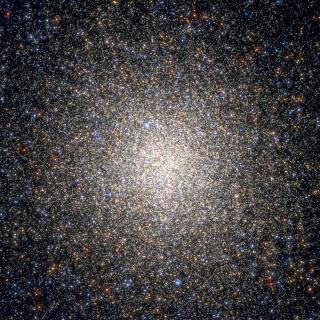Saviane, I.; Exter, K.; Tsamis, Y.; Gallart, C.; Péquignot, D.
Referencia bibliográfica
Astronomy and Astrophysics, Volume 494, Issue 2, 2009, pp.515-525
Fecha de publicación:
2
2009
Revista
Número de citas
10
Número de citas referidas
7
Descripción
Context: A planetary nebula (PN) candidate was discovered during FORS
imaging of the Local Group dwarf galaxy Phoenix. Aims: We use
this PN to complement abundances from red-giant stars. Methods:
FORS spectroscopy was used to confirm the PN classification. Empirical
methods and photoionization modeling were used to derive elemental
abundances from the emission line fluxes and to characterize the central
star. Results: For the elements deemed most reliable for
measuring the metallicity of the interstellar medium (ISM) from which
the PN formed, [O/H] ~ -0.46 and [Ar/H] ~ -1.03. [O/H] has lower
measurement errors but greater uncertainties due to the unresolved issue
of oxygen enrichment in the PN precursor star. Conclusions:
Earlier than 2 Gyr ago (the lower limit of the derived age for the
central star) the ISM had Z = 0.002-0.008, a range slightly more
metal-rich than the one provided by stars. Comparing our PN-to-stellar
values to surveys of other dwarf Local Group galaxies, Phoenix appears
to be an outlier.
Proyectos relacionados

Vía Láctea y galaxias cercanas
El objetivo general del Proyecto es el estudio de la estructura, historia evolutiva y proceso de formación de galaxias a través de sus poblaciones estelares resueltas, tanto a partir de fotometría como espectroscopia. El proyecto puede dividirse en cuatro líneas principales: I. Historia de formación estelar en el Grupo Local. El objetivo de esta
Martín
López Corredoira